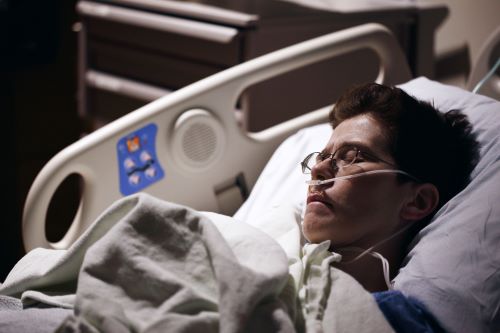Prior to Covid-19 New Zealand workers  had comparatively less paid sick leave than most of the developed world. When the Labour government introduced a bill into Parliament to increase the minimum sick leave entitlement from 5 days to 10 days each year it was met by resistance from business organisations and the National Party.
had comparatively less paid sick leave than most of the developed world. When the Labour government introduced a bill into Parliament to increase the minimum sick leave entitlement from 5 days to 10 days each year it was met by resistance from business organisations and the National Party.
The Head of Advocacy, Alan McDonald, at the Employers and Manufacturers Association argued against the move to double sick leave. He said “we are of the view that we are not quite sure there is a problem there that needs to be fixed. We are in the middle of an exceptional set of circumstances – that has been the driver behind the push for 10 days”.
Likewise, National Party workplace relations spokesman Scott Simpson said it was the wrong time to extend sick leave - “The Government is using Covid-19 as its rationale for doubling sick leave, but if that were the case then surely the change would be temporary rather than permanent”. Simpson said “doubling sick leave just piles more costs onto business at a time when they can least afford it, coming on top of minimum wage increases and the proposal for an extra public holiday”.
While the increase in sick leave took place in July 2021, last year was the first full year of that impact.
The recent Workplace Wellness Report 2023 prepared by Southern Cross Health Insurance and Business NZ was released last week without much fanfare. It is interesting because it reports on the wellness of New Zealand’s workforce during the year of 2022. It shows that New Zealand workers do not appear to be abusing their increased sick leave entitlements.
The Report showed an overall absence of 5.5 days for each employee in the year that Covid-19 restrictions were eased and New Zealand’s borders reopened. The previous highest result was 4.7 days in 2014 and 2018. The lowest result was in 2020 with 4.2 days (the year New Zealand had a long lock-down and borders were closed).
The Report says a number of factors should be considered when examining the results. It says Covid-19 has had an impact on the Report results. Lockdowns and employers allowing more employees to work from home resulted in the lowest recorded absences in 2020. The change from the lowest result in 2020 to the highest result in 2022 also likely reflects the lifting of Covid-19 restrictions, the opening of New Zealand’s borders, and an increased view by employers that it is desirable for employees to stay home if they are unwell.
It is also interesting that the 2022 results continue to show the trend that higher average levels of absence are reported for manual workers compared to non-manual workers. The 2020 results showed that the average number of days lost for each manual worker was 5.3 days while in 2022 the average number of days had increased to 7.1 days.
The Report says that this may also be impacted by Covid-19. More non-manual workers may be able to work from home and a higher proportion of them may continue to work even if unwell. Manual workers may be refraining from going to work due to employers telling their workers not to come to work if they are unwell.
Employers remain able to challenge perceived misuse of sick leave. Employers may require a medical certificate from their employee if an absence is for 3 or more consecutive days (they do not have to be working days for the employee). Employers may also require a medical certificate if they agree to pay the cost of it for less than 3 consecutive days.
The difficulty is that doctor shortages are well reported. For non-urgent matters there are reported waiting times of up to 6 weeks. It seems unlikely that an employer’s request for a medical certificate will find priority with our overworked doctors. And realistically, how can a doctor certify that an employee was sick the previous week without relying on the self-report of the employee to their GP?
While 2022 continued to present challenges to employers from Covid-19, it is pleasing to see that the doubling of sick leave entitlements has not resulted in a doubling of absences. The ability to work from home when mildly sick may also be helping to reduce the impact of the increased entitlement on the cost to business. Read more....

